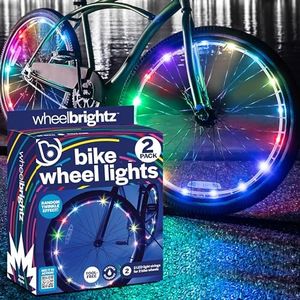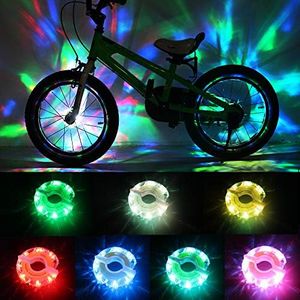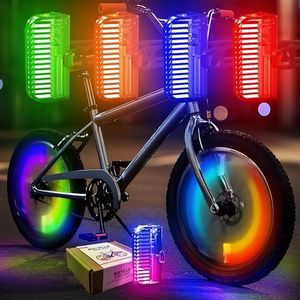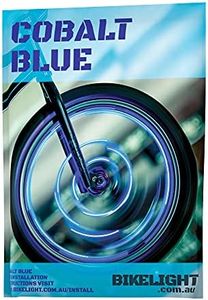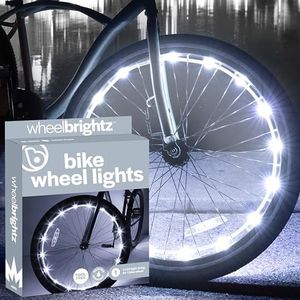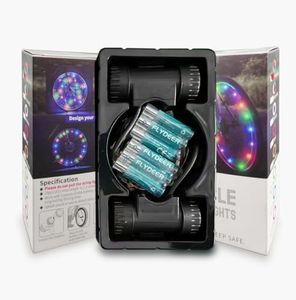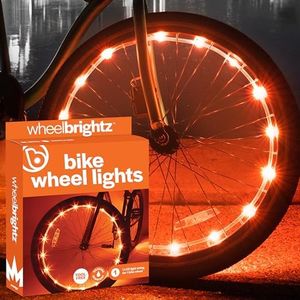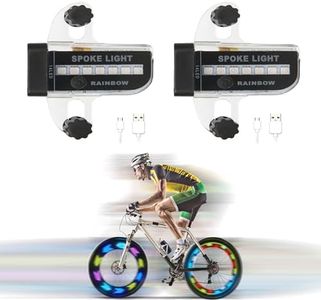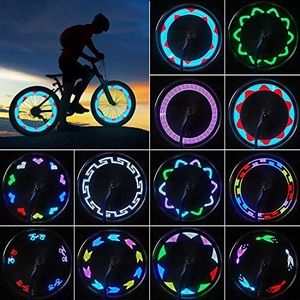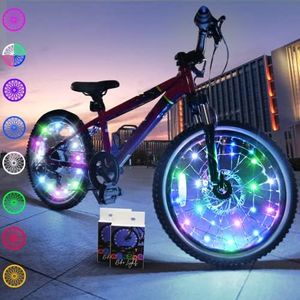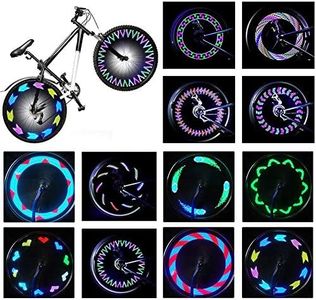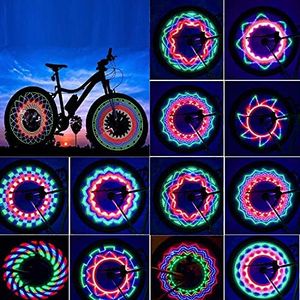We Use CookiesWe use cookies to enhance the security, performance,
functionality and for analytical and promotional activities. By continuing to browse this site you
are agreeing to our privacy policy
10 Best Bike Wheel Lights
From leading brands and best sellers available on the web.Buying Guide for the Best Bike Wheel Lights
Choosing the right bike wheel lights can really improve your visibility and safety while riding at night, and also add a touch of personal style to your bike. The market offers many options, so understanding what matters most to you will help you select the ideal light. Before purchasing, think about when and where you'll be riding, how much illumination you need, and any personal preferences for design or additional features.Brightness (Lumens)Brightness, measured in lumens, determines how visible your wheel lights are in the dark. Brighter lights make you easier to see by drivers and others on the road, which increases safety. Lower brightness lights (around 10-50 lumens) are good for well-lit city streets or for decorative purposes, while higher brightness (50 lumens and above) stands out in darker areas or when you need extra attention. Pick the brightness based on how dark your typical riding environment is; if you want more attention or ride in poorly lit places, go with higher lumens.
Power Source and Battery LifeBike wheel lights are powered either by disposable batteries or rechargeable battery packs. Battery life is important so your lights don't die mid-ride. Shorter rides or occasional use can work with alkaline batteries or lights with 5-10 hour run times, while frequent riders or longer trips need rechargeable batteries or models that provide 20 hours or more per charge. Match the battery life to your riding habits, and consider how easy it is for you to recharge or replace batteries.
Water ResistanceWater resistance measures how well the lights handle rain, puddles, or splashes. Basic water resistance (often rated IPX4) is enough for light rain or damp conditions, but if you ride in heavy rain or tend to leave your bike outside, look for higher ratings (like IPX6 or IPX7) for full protection. Pick a water resistance level that matches your local weather and how exposed your bike will be.
Mounting MethodThe way bike wheel lights attach to your wheels is important for security and ease of installation. Some lights clip on with no tools, others use zip ties or special mounts. Simple clip-on lights are best for quick setup and removal, while more secure mounts stay on better for rough rides. Choose a mounting type that you're comfortable installing and that works with your bike’s wheel design.
Light Patterns and ColorsLight patterns and color options add both visibility and fun. Some lights offer steady illumination, while others blink or create patterns as the wheel moves. Color choices can be single-color or allow multiple color changes. If style is important, or you love being noticed, go for options with patterns and multiple colors. For pure safety, steady white or yellow lights are usually most visible.
DurabilityDurability refers to how well the lights stand up to bumps, weather, and regular use. More durable lights are made with sturdy materials and thicker housings that resist cracking or breaking if the bike falls or hits a pothole. If you often ride on rough roads or transport your bike a lot, prioritize a wheel light designed for durability.
Ease of UseEase of use covers how simple the lights are to turn on/off, change settings, or remove for charging. Lights with single-button controls or automatic-on features save time—great if you want hassle-free use every ride. If convenience is key for you, look for products noted for their user-friendly operation.

